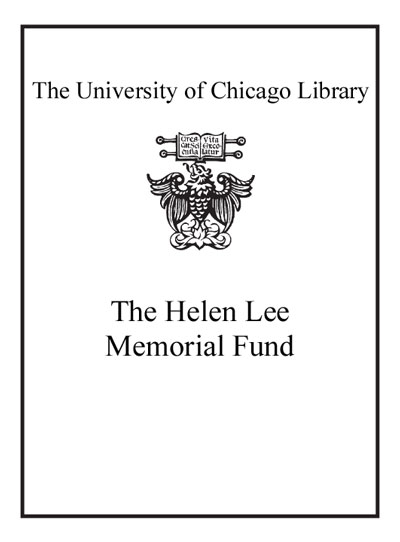|
|
|
|
| LEADER |
00000cam a2200000 a 4500 |
| 001 |
8117200 |
| 005 |
20130322133200.0 |
| 008 |
100106s2009 enka b 000 0 eng |
| 003 |
ICU |
| 010 |
|
|
|a 2011499283
|
| 015 |
|
|
|a GBB006034
|2 bnb
|
| 016 |
7 |
|
|a 015373979
|2 Uk
|
| 019 |
|
|
|a 320801546
|
| 020 |
|
|
|a 9781901992847 (pbk.)
|
| 020 |
|
|
|a 1901992845 (pbk.)
|
| 035 |
|
|
|a (OCoLC)501391808
|z (OCoLC)320801546
|
| 035 |
|
|
|a 8117200
|
| 035 |
|
|
|a om3139042
|
| 040 |
|
|
|a UKM
|b eng
|c UKM
|d N15
|d BTCTA
|d YDXCP
|d BWK
|d CDX
|d BWX
|d UWO
|d FDA
|d UKMGB
|d DLC
|
| 042 |
|
|
|a ukscp
|
| 043 |
|
|
|a e-uk-en
|
| 049 |
|
|
|a CGUA
|
| 050 |
|
4 |
|a NK5107.3
|b .S54 2009
|
| 082 |
|
|
|a 745
|
| 100 |
1 |
|
|a Shepherd, J. D.
|q (John David)
|0 http://id.loc.gov/authorities/names/n97119009
|1 http://viaf.org/viaf/235942869
|
| 245 |
1 |
4 |
|a The glass workers of Roman London /
|c John Shepherd and Angela Wardle ; with Mark Taylor and David Hill ; photography by Andy Chopping.
|
| 260 |
|
|
|a London :
|b Museum of London Archaeology,
|c 2009.
|
| 300 |
|
|
|a 64 p. :
|b col. ill. ;
|c 17 cm.
|
| 336 |
|
|
|a text
|b txt
|2 rdacontent
|0 http://id.loc.gov/vocabulary/contentTypes/txt
|
| 337 |
|
|
|a unmediated
|b n
|2 rdamedia
|0 http://id.loc.gov/vocabulary/mediaTypes/n
|
| 338 |
|
|
|a volume
|b nc
|2 rdacarrier
|0 http://id.loc.gov/vocabulary/carriers/nc
|
| 504 |
|
|
|a Includes bibliographical references.
|
| 505 |
0 |
|
|a Introduction -- Before we begin, just what is glass? -- How do you make a glass vessel? -- How was glass used in Roman London? -- How many other sites in Roman London have evidence of glass working? -- What exactly was found at 35 Basinghall Street? -- What did they use to make the vessels at the Basinghall workshop? -- What is the evidence for blowing glass vessels at Basinghall Street? -- Do we know what shapes of vessel they were making? -- Wasters? -- And what was the scale of production? -- And when? -- Who were the glass workers? -- Where next? -- Further reading, places to visit.
|
| 520 |
1 |
|
|a "Recycling may be a topical subject today, but it is an ancient practice. Glass was regularly recycled to make new vessels during the Roman period and important new evidence for glass working in London came from 35 Basinghall Street in the City in 2005, with the discovery of over 70kg of broken vessel glass and production waste. This ranges from large blocks, which have cooled in a tank furnace, to minute threads swept from a workshop floor. Particularly impressive are thousands of moils - the small cylinder of glass left on the end of the blowing iron when a vessel has been detached - each representing the making of a single product." "Such glass was a valuable commodity which would normally have been remelted in a furnace and used to create new vessels. Its presence may mark the demise of a nearby glass workshop, located on the margins of the city. Detailed study of the waste is providing new insights into the glass industry of 2nd-century AD London, its products and the techniques of its craftsmen." "This colourful book reviews the current evidence for the history of glass working in Roman London. The various stages of glass vessel production are described, using both the evidence from Basinghall Street and striking images of the experimental work of modern glass-blowers using ancient techniques."--BOOK JACKET.
|
| 650 |
|
0 |
|a Glassware, Roman
|z England
|z London.
|
| 650 |
|
0 |
|a Glass
|z England
|z London
|x History.
|
| 650 |
|
0 |
|a Glass manufacture
|z England
|z London
|x History.
|
| 651 |
|
0 |
|a London (England)
|x Antiquities, Roman.
|
| 650 |
|
7 |
|a Classical antiquities.
|2 fast
|0 http://id.worldcat.org/fast/fst00863445
|
| 650 |
|
7 |
|a Glass.
|2 fast
|0 http://id.worldcat.org/fast/fst00943029
|
| 650 |
|
7 |
|a Glass manufacture.
|2 fast
|0 http://id.worldcat.org/fast/fst00943191
|
| 650 |
|
7 |
|a Glassware, Roman.
|2 fast
|0 http://id.worldcat.org/fast/fst01199969
|
| 651 |
|
7 |
|a England
|z London.
|2 fast
|0 http://id.worldcat.org/fast/fst01204271
|
| 655 |
|
7 |
|a History.
|2 fast
|0 http://id.worldcat.org/fast/fst01411628
|
| 700 |
1 |
|
|a Wardle, Angela.
|0 http://id.loc.gov/authorities/names/nr91009694
|1 http://viaf.org/viaf/19723653
|
| 700 |
1 |
|
|a Taylor, Mark.
|0 http://id.loc.gov/authorities/names/n93044566
|1 http://viaf.org/viaf/2167062
|
| 700 |
1 |
|
|a Hill, David.
|0 http://id.loc.gov/authorities/names/n83048766
|1 http://viaf.org/viaf/85764055
|
| 700 |
1 |
|
|a Chopping, Andy.
|0 http://id.loc.gov/authorities/names/n2004032725
|1 http://viaf.org/viaf/68318877
|
| 710 |
2 |
|
|a Museum of London Archaeology.
|0 http://id.loc.gov/authorities/names/no2009113261
|1 http://viaf.org/viaf/132850220
|
| 903 |
|
|
|a HeVa
|
| 929 |
|
|
|a cat
|
| 999 |
f |
f |
|i 44e4f892-4ee9-587e-8390-1e86d82cee9b
|s f454e8ed-9c80-5af5-9a92-7aa704512fa1
|
| 928 |
|
|
|t Library of Congress classification
|a NK5107.3 .S54 2009
|l JRL
|c JRL-Gen
|i 1277228
|
| 927 |
|
|
|t Library of Congress classification
|a NK5107.3 .S54 2009
|l JRL
|c JRL-Gen
|e LEEH
|b 092730502
|i 8795972
|

